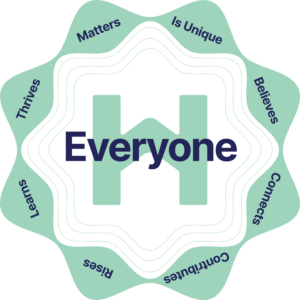A recent Forbes article summarized the employee engagement survey as a way to discover what drives your unique group of employees so that you can more quickly engage them. The article also highlighted that summer is a “weirdly great” time for organizations to conduct engagement surveys.
Now that I think about it, when I led the charge on engagement surveys at my former employer, the survey period always spanned two weeks in July…coincidence? Weirdly great or not, does your organization have a preferred cadence for engagement surveys? Do you follow a pulse survey strategy, leverage a third party service like Top Workplaces or take the traditional annual engagement survey approach? While one size doesn’t fit all for approaches to surveying employees, there is one thing all surveys should have in common: A follow-up strategy.
If you’ve followed the Forbes advice and recently conducted your organization’s latest engagement survey, you’re in the prime time for action. No matter where you are in the process, the latest tool from humanworks8 provides recommendations and guidance to make your overall surveying strategy a success.
Engagement Survey Best Practices
For a follow-up strategy to be successful, organizational leadership must first set the stage for surveying. Any surveying efforts at your organization should be built upon a foundation of core values. Industry standard tactics such as the Gallup Q12 questions or eNPS system can be adopted and enhanced using the values language unique to your culture. humanworks8 preferred questions (found in The Engagement Survey Blueprint Tool) incorporate those best practices, but also provide additional guidance such as:
- Don’t leave room for indifference – Leave out a “neither agree nor disagree” option if using a Likert scale.
- Measure trust – Consider adding a question that addresses whether or not the survey taker believes action will be taken on survey results.
- Let go of the engagement score – Rather than seeking to create the perfect “Engagement Index,” focus on the specific areas of improvement and moving the needle at each survey period.
Survey Strategy Using The 8
Our business is built on a people-centric philosophy, and we believe when organizations think about people with that philosophy – The 8 – in mind, that they’re on a path to success.
Consider survey questions that address each of The 8 in your organization’s unique way. For example, a question such as “I have support at work to find and maintain balance in my life” ties closely with Everyone Thrives and “My leader plays an active role in my professional development” has a clear connection to Everyone Learns. Once good questions are established, however, is when the real work begins. The real work? Acting on the survey results.
Formula for Engagement Survey Action
Whether you’ve conducted a formal engagement survey in the past or not, you’ve likely acted on some form of employee feedback in the past. Did your employees notice? How did you communicate the action you were taking?
Communication tied to your engagement survey is critical for not only your survey success, but for the sustainability of your organization’s survey practices. It’s the cornerstone of your survey follow-up strategy. If you don’t communicate the actions you’ve taken based on survey feedback, employees will feel frustrated or confused and get quiet – they’ll stop giving feedback.
Whether you’re conducting a traditional annual employee engagement survey or are normalizing frequent, open and productive feedback conversations from all employees, the formula is the same. Get the feedback, act on the feedback and communicate how you acted on the feedback. Review your employee feedback strategy. List out all the steps in the process such as (1) plan your survey or other feedback collection strategy, (2) launch feedback strategy, (3) analyze responses, (4) make an action plan. Then, in between each step, add a new step: Communicate it. Tell your employees what you’re doing it and why you’re doing it, and tell them often.
How to Take Action on Survey Results
Determining how to take action on survey results depends largely on why you asked the questions in the first place. The questions you choose to ask your employees should be intentional, meaningful and something that you’re willing and able to act on. For example, if you ask the famous Gallup question, “Do you have a best friend at work?”, you should be prepared to put attention to creating an environment and experiences that foster connection and team building.
At the same time, before rushing into action, take ample time to dig deep and discuss what could cause someone to respond the way they did. Following the good friend example, the rating may be low for various reasons: Many employees are working remotely, their schedules don’t allow for shared experiences, tenure is low so connections haven’t yet formed, etc. Start the conversation with your leaders. Then consider how listening sessions, or focus groups, might help identify some of the reasons behind the responses.
As you brainstorm these reasons and potential actions to take, remember to arrive at a priority action, give it a timeline and enact a communication plan around it.
The Engagement Survey Blueprint
Download The Engagement Survey Blueprint tool to use as a guide in survey planning and response action.


